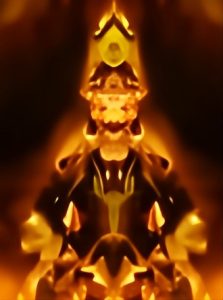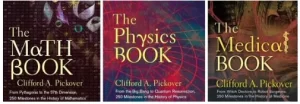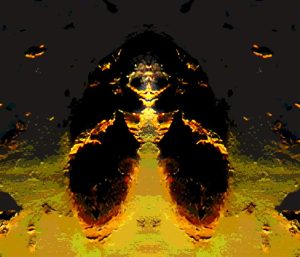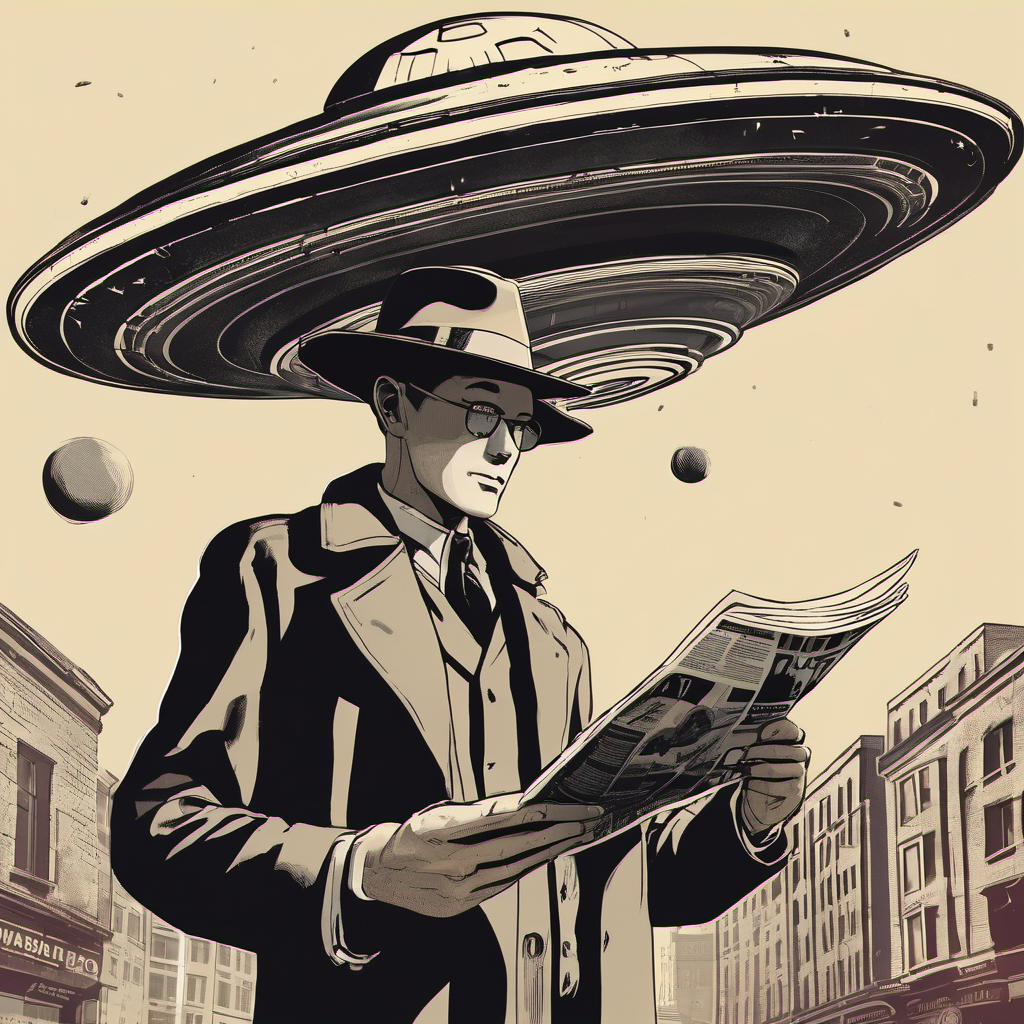
By KEN KORCZAK
Medical science today recognizes a special group of people with a special ability.
They’re called “Bonnet People.”
Their special ability? They can see fairies and elves.
They may also possess a special faculty that enables them to peer into parallel worlds.
Oh yeah — and one more thing — these people are blind.
Let’s talk about that.
BONNET PEOPLE
Bonnet People were first identified more than 250 years ago by the brilliant Swiss botanist, naturalist and philosopher Charles Bonnet. A leading-edge thinker of his day, Bonnet scored a string of scientific firsts.
For example, he coined the term phyllotaxis. Bonnet was among the first to use the term “evolution” in a biological context. He was the guy who figured out that insects breathed through their spiracles and that aphids engaged in parthenogenetic reproduction. (That’s just a few of his many accomplishments).
Bonnet lost his hearing at age seven and went blind much later in life. But it was when his beloved grandfather lost his sight that Bonnet identified and documented something that seemed sensational.
At age 87, grandfather Charles Lullin’s worsening cataracts gradually cut off his vision. After his world went dark, Lullin began to report seeing “fairies.”
But that wasn’t all.
The elderly man — who was of sound mind — also reported an array of strange “sights” and characters that somehow appeared in his “mental vision.” This included trolls, witches, buildings of fantastic architecture, tapestries, breathtaking landscapes, scaffolding-like structures and much more.
This was the first formal description of a condition that came to be known as “Charles Bonnet Syndrome.” The phenomenon occurs not just among the elderly, but in any person of any age who was once sighted and goes blind later.
Charles Bonnet Syndrome was recognized as a bona fide illness by the world medical community in 1982. The preferred term among doctors is Visual Release Hallucinations (VRH).
The data on VRH patients shows that they command an above-average IQ. Most are elderly but almost none suffer from dementia or any other form of mental illness nor have a history of hallucination.
Among blinded adults of age 65 or older, the prevalence of VRH has been reported to be between 10% and 40%. One Australian study found the prevalence to be 17.5%.
Medical researchers use the term “Lilliputian” to describe the visions of Bonnet People because the characters are most often “little folks.” They appear as classic elves or fairies, right down to their style of dress, from jaunty hats to sporty ankle boots.
Other types of visions are of “strange faces” bearing “wide smiles and teeth.” These visages are decidedly cartoon-like not only in appearance, but they often engage in farcical behavior. For example, one woman reported a scenario in which “two midget cops were escorting a midget criminal into a tiny prison van.”
In another case reported by Dr. Stephen Doyle, an ophthalmologist at Manchester Royal Eye Hospital, a female patient said she began to see numerous “visions” after losing her sight. In one case, she saw “two elves, two inches in height and wearing stovepipe hats.” They “paraded” in front of her and wore what she describes as “clothing like that of chimney sweeps.”
They looked so real, she felt as if she could reach out and catch them — something she occasionally tried to do without success.
Dr. Doyle found this so odd that he referred her to a psychiatrist. This was Dr. Robert Teunisse of the University Hospital at Nijmegan in the Netherlands. After running the woman through a battery of tests, she was pronounced: “completely sane.”
The Bonnet People phenomenon caught the attention of the brilliant mathematician and computer scientist Dr. Clifford Pickover. Author of 50 books and holder of more than 800 patents, he is also known today for his groundbreaking work at IBM’s Thomas J. Watson Research Center where he served as editor of the IBM Journal of Research and Development.

Dr. Pickover earned his Ph.D. in molecular biophysics and biochemistry in 1982 at Yale University. He is noted for his research on X-ray scattering and protein structures.
Pickover wrote about Bonnet People in his book, Sex, Drugs, Einstein and Elves. In his research, he found reports of people who see “beings with black eye sockets” and also, “serene landscapes and vortices.”
Others report “sprawling natural locations” that sometimes are populated with “crowds of people.” The latter can be “life-sized or tiny.” Still others saw “ghostly translucent beings floating in hallways” and “shining angels.” One Bonnet Person tells of an absurd but incredibly real image of a “man wearing a large flower on his head.”
Pickover speculates:
“Perhaps when vision deteriorates, the brain’s visual cortex is starved for information, and the brain is free to access parallel realities or create new ones.”
Pickover could not help but notice a similarity to the kind of images that people report while under the influence of the powerful hallucinogen DMT, N, N-Dimethyltryptamine.
DMT, a psychedelic compound of the tryptamine family, resembles the structure of specific neurotransmitter types in the human brain. The pineal gland in the brain can manufacture extremely tiny amounts of DMT. When injected or smoked in macro-doses, however, the compound breaches the human blood-brain barrier and alters perception radically.
The most famous DMT studies on human subjects were conducted by Dr. Rick Strassman at the University of New Mexico School of Medicine in 1990. He was the only researcher to obtain official government sanction to conduct trials of the psychedelic compound on people.
Under tightly designed protocols, Dr. Strassman administered 400+ doses of DMT to 60 volunteers.
One of the most common DMT-induced visions is remarkably similar to the experiences of the Bonnet People — lots of encounters with elves, magical beings, strange landscapes and bizarre creatures.
One of the most exotic “species” of elves seen by the DMT subjects are known as “machine elves.” These incredibly fantastic, magical beings appeared to be hybrids of traditional elves or fairies and super high-tech robotics.

What’s amazing is that of the 60 people Dr. Strassman dosed with DMT, a significant majority reported either seeing elves, the machine elves or being taken to their strange world.
The latter was usually a wild, magical, psychedelic locale yet technological realm. Alien-like beings of many varieties were encountered there, including a lot of humanoid reptilians, the same kind reported by many UFO abductees.
One person reported being raped by a reptilian.
In-depth details of Dr. Strassman’s work with DMT can be found in the multi-authored book Inner Paths to Outer Space.
As for the mainstream medical community, no consensus has emerged to fully explain Charles Bonnet Syndrome. This from Wikipedia:
The most commonly accepted theory for proposes that extreme visual impairment promotes sensory deafferentation, leading to disinhibition, thus resulting in sudden neural firings of the visual cortical regions. A few studies record that visual hallucinations are likely to be concentrated in the blind regions. MRI imaging of Charles Bonnet Syndrome patients displays a relationship between visual hallucinations and activity in the ventral occipital lobe.
Of course, mainstream neurophysiology rejects the notion that anything paranormal is going on. The hypothesis is that CBS (or VRH) is an experience embedded within the material matter of the human brain.
The idea that Bonnet People may truly be seeing into another dimensional or alternate universe — as Dr. Pickover has suggested — will never be an option on the operating table of medical science.
BUT WAIT A MINUTE!
Isn’t it the case that ordinary people who are not blind and who are not categorized as Bonnet People and who are not tripping on DMT also see fairies, gnomes, elves and trolls? Yes, clearly that is the case. Sighted people see these same figures with their normal eyesight ever so often — and these are not stories gleaned from centuries-old tracts of folklore.
The fact is, there are plenty of reports of encounters with fairy folk, classic elves, trolls and ‘Little People,’ and these sightings continue right up to the present day.
Here is just one recent example:
Scottish construction worker Steve Oldale of Glasgow was hiking in a rural area near Perthshire, Scotland, in the early 2000s. He was passing by a hillock that locals have traditionally considered a “fairy mound.” It was about 5 p.m. when Oldale found himself enveloped in a white mist that had rolled in suddenly. He began to hear what he described as “fairy music.” Oldale said the lilting tunes made him feel “enraptured.” A short time later, Oldale was stunned to see not far from him “a wee fella” of about four feet in height.
The little man wore a “crude hat” that appeared to be hand-sewn and made of leather. He wore a simple tunic of shabby rough cloth belted at the waist with a grimy piece of twine.
The wee man was not bearded but “badly shaven” and his hands were “filthy” with “dirty fingernails.” The little man reminded him somewhat of photos he had seen of ancient bog bodies that had been recovered from various locations across northern Europe.
Shortly thereafter, the wee man was joined by a wee woman who was dressed similarly and looked as shabby and grimy as her partner. He described their faces as “wizened” and they projected a truculent demeanor. The wee folks were clearly just as stunned to see Mr. Odale as he was to confront them!
Then something bizarre occurred. The wee woman happened to be carrying a pair of long shears, like sheep shears used in earlier times. She bent down and tried to cut Oldale’s shadow! It was as if a dimensional distortion had caused the wee folk to view Oldale’s flat, 2D shadow as a 3D object!
Oldale, completely baffled, suddenly shouted “Oy!” at the wee folk, causing them to vanish.
(See Mr. Oldale tell his story in THIS VIDEO CLIP).
Here is another case:
In 1967 near the tiny town of Studham in England’s Bedfordshire, six schoolboys, all about age 10, were playing in the Studham Commons when, suddenly, a blue lightning bolt crashed down near them.
A moment later, the boys were stunned to see a “little blue man” about 20 yards from them.
In Bonnet People-like imagery, the little man sported a long blue beard, and he was wearing an “odd one-piece suit.” On his head was perched a “tall bowler hat.” He was girded by a thick black belt that had a box attached to the front where a buckle should be.
The boys also described a “faint blue glow” that surrounded his body, like an aura. The boys ran toward him but he “vanished in a puff of smoke” just as they closed in. He reappeared 20 yards away again. This cat-and-mouse chase-and-vanish game went on for some time.
There is more to that story, but I’ll stop there.
In fact, there are so many other similar stories that one could easily write a book about sightings of classic elves or fairy-like beings. Some people have written those books — including me.
Briefly:
In the early 1990s, I met a man who was living at a homeless shelter where I worked as a volunteer. He told me a fascinating story about meeting “a classic fairy being” who eventually helped the man cure himself of drug addiction.

He encountered the entity while practicing an unusual form of meditation that involved intensely focusing all his attention on a common potted house plant. I found his story so profound and believable that I wrote a short book that details his remarkable experience with this “elf” or “fairy being” and how it played out in a complex way and transformed his life.
My point is this:
It’s clear that one need not be blind and diagnosed with Bonnet Syndrome to observe elves, fairies, cryptids and other strange entities. These entities can — and are — readily sighted by both the recently blinded and the normally sighted
BUT WAIT A MINUTE AGAIN!
The fact is, there are numerous triggers that produce sightings of fairies.
Let’s review:
–> Lose eyesight.
–> Get high on DMT (or other psychedelic compounds, such as LSD, psilocybin mushrooms or ayahuasca.)
–> Go for a walk among nature in a remote natural landscape.
–> Practice intensive meditation.
–> See fairies or elves in dreams or in the lucid dream state (something I have personally done several times).
–> Encounter them in the hypnagogic state or in an out-of-body experience.
–> Encounter them during a near-death experience (NDE). (Note: See the story of firefighter William J. Leston who encountered “elf beings” during an NDE HERE).
WHAT ARE WE TO MAKE OF IT?
When all things are considered, the best solution to the mystery of Charles Bonnet Syndrome is that the fairies, elves, trolls and other fantastic things perceived by people is that they are real — not hallucinations. Full stop.
That the fairies are real entities existing in other dimensions of reality is a much stronger solution to explain the visions of Bonnet People than the mechanical-material models of neural and chemical brain artifacts offered by modern brain physiology. As biologist Thomas Huxley said more than 100 years ago:
“How is it that anything so remarkable as a state of consciousness comes about as the result of irritating nervous tissue is just as unaccountable as the appearance of Genie when Aladdin rubs his lamp?”
I would suggest that the reality behind the visions of Charles Bonnet Syndrome is much more complex than brain mechanics. A true solution must be framed within the context of a world view — a science — that rejects the fundamental notion that material reality is primary.
The reason that Bonnet Syndrome has resisted a satisfying one-fits-all physiological explanation is that it can’t be accounted for if we assume that the brain is a physical lump of matter and the generator of consciousness.
There is a growing notion that the “solid physical reality” we experience is not “real and solid” at all but is actually a “projection” that is generated from a non-physical source. In other words, our physical bodies are more akin to avatars acting out roles inside a simulated computer game.
The British University of Sussex neuroscientist Anil Seth Ph.D. said that everything we perceive with any of our senses, including sight, is a hallucination.
“In fact, we’re all hallucinating all the time including right now. It’s just that when we agree about our hallucinations, we call that reality.”
Thus, when Bonnet People report seeing fairies from their state of blindness, the consensus among mainstream science is that these fairies are “not real” — but that’s just because we “don’t agree” as a culture that they are real. If we had a reason (or an updated model of reality) to believe as a culture that they are real and agreed upon it — then they would be real.
–> They would be real because they ARE real.
I would also point to the work of American cognitive psychologist Donald D. Hoffman. He earned his Ph.D. in computational psychology from MIT in 1983. Dr. Hoffman has come to the conclusion that the common adage “seeing is believing” is completely false. He said:
“What we see with our eyes is not a limited reality, it is completely detached from reality.”
Hoffman does allow for the idea that what we see is “a real experience” but that it is, ultimately, “an adaptive set of perceptions.” He recently told computer scientist Lex Fridman during a lengthy 3-hour interview:
“The perceptions are real as perceptions … but we have assumed there is a pretty tight relationship between our perceptions and reality. If I look up and see the moon, then there is something that exists in space and time that matches what I perceive …our perceptions are there to guide adaptive heavier …they are not there to show you the truth. In fact, … (perceptions) are there to hide the truth because the truth is too complicated.”
That last line is key — our perceptions hide the truth from us — so, in effect, everything we think of “seeing” is really just a concocted story that we are telling ourselves.
Furthermore, this “story” represents a “consensus reality” because most of us agree on the story and we call it things like “common sense reality.”
The problem is, when some people “step out of line” and start talking about the fairies, elves and trolls they “see,” “envision” or encounter in an objective real-life situation (as did Mr. Oldale in Scotland), then we invent Band-Aid explanations, such as “Visual Release Hallucination” or “DMT-induced hallucination” to dismiss them as events that are outside of the story or consensus reality we have cobbled together for ourselves.
But the much better explanation is that fairies, elves and the rest are simply real entities that have an objective existence in some parallel world or alternate reality that is tangential to our own.
Sometimes we interact with them in real and meaningful ways.
For more stories of the paranormal and fairy folk, please see: KEN-ON-MEDIUM

Fantastic article! Thanks. Maybe these people are perceiving an alternate reality.